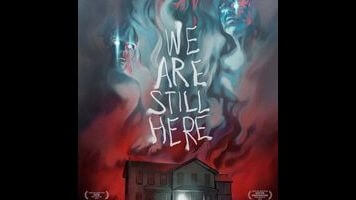Fables and myths rooted in Americana are a grand tradition in the horror genre. From Häxan to Poltergeist to this year’s It Follows, stories of terror that invent a new urban or rural folklore make up a hardy subsection of this field. It makes sense for horror to so often frame its narratives around some long-running evil setting its sights on newcomers, because American ideology is rooted in notions of transcending what came before. Whereas foreign-born horror like The Grudge or Pulse often feature an inescapable supernatural evil, homegrown horrors are primarily about hardbitten folks overcoming evils from an earlier age, via the right spell or the proper respect for the dead. Sometimes, it’s as simple as just leaving the damn house, as the Lutz family from The Amityville Horror can attest to. But they almost all feature one bedrock element: that the past is not done with us.
The new chiller We Are Still Here is the latest iteration of people unwittingly stumbling upon an ancient menace, and it succeeds more than it fails, thanks largely to the nice work of first-time director Ted Geoghegan. A period piece set in the late ’70s—1979, to be exact, for reasons that eventually become clear—the movie offers little narrative handholding in the early going. Instead, we’re plunged right into the story of Paul and Anne Sacchetti (Andrew Sensenig and genre MVP Barbara Crampton), moving to a secluded house in a rural town as they try to move on following the death of their grown son, Bobby. Right away, Anne suspects that the spirit of Bobby may have joined them in the house, as small things start to stir her suspicions. A picture of Bobby falls over. His old baseball rolls downstairs and ends up at her feet. Convinced something otherworldly may be afoot, Anne invites her New Age mysticist friends May and Jacob Lewis (Lisa Marie and Larry Fessenden) up to the house to see if they can help her make contact with their son. Also along for the ride is Lewis’ son Harry—Bobby’s roommate in college—and his girlfriend Daniella.
Shockingly, the supernatural presence in the house isn’t as benign as it first seems, and the actual story is surprisingly complex, even though the final act makes a bit of a hash of it. The townsfolk, it quickly becomes apparent, are all in possession of some knowledge that our new guests are not, and that mystery makes for the most entertaining element of the film. Though slow early scenes suggest the movie will take its time getting to the scary stuff, that initial quiet is actually a feint. Within 10 minutes or so we’re getting a look at the demonic presence in the home, and it is—quite literally—a hot mess.
In some ways, the film travels the same retro-homage road that Ti West’s House Of The Devil did, explicitly aping the tone and editing of a bygone era of horror cinema. The most obvious reference point here would be to Lucio Fulci’s work from the ’60s and ’70s, in which slow and measured scenes were intercut with often bonkers mysticism and gory violence. We Are Still Here certainly delivers on the last element, with practical effects that are as gruesome as anything from a Herschell Gordon Lewis splatter-fest. But the movie also uses CGI in a refreshingly straightforward manner, applying it only when necessary, and almost always to the betterment of the shot. Geoghegan blends these elements in an effective way. He also demonstrates a capacity for ratcheting up tension and delivering jump scares that don’t feel cheap.
When the third act eventually collapses under the weight of a ridiculous showdown, it doesn’t stop being entertaining, in large part because the chaos that ensues feels like a commensurate payoff for the domino-stacking that precedes it. The movie gives you people to root for, and a basis for wanting them to escape. All four of the leads here deliver solid performances, even Lisa Marie, who gives good New Age psychobabble. Larry Fessenden does a gloss on his irascible wiseass, and Crampton and Sensenig both offer nicely affecting performances that pivot on their respective efforts to process the death of their son.
We Are Still Here is a strong entry to the horror subgenre of American myth-making, every bit as evocative a fable as that of Jason Voorhees or your friendly neighborhood Indian burial ground. Ultimately, it suggests the things from our past that haunt us can also be a useful element in our lives, and the pain we endure can be turned to good ends. It also suggests that you probably shouldn’t trust your local community, because our country has a terrible track record of throwing innocents under the bus when we’re panicked. But these themes are downplayed, with the focus firmly on goosing the audience with a good old-fashioned ghost story, combined with a Rosemary’s Baby-style paranoia that your kindly neighbors may be out to get you.


 Keep scrolling for more great stories from A.V. Club.
Keep scrolling for more great stories from A.V. Club.